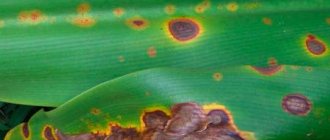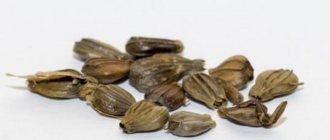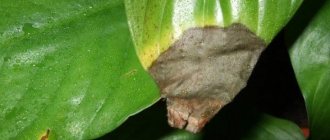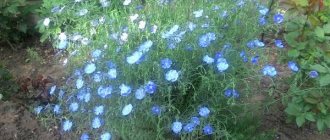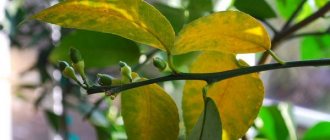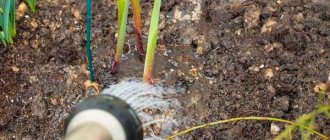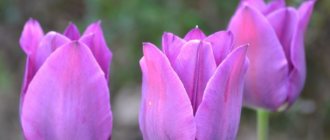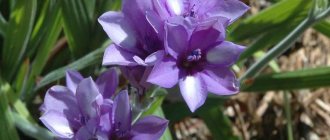Yarrow has been known for a long time; back in the 4th century, our ancestors grew it to prepare infusions and decoctions, and used it for medicinal purposes. The homeland of this plant is considered to be the European part of the continent, from the Urals to Italy. Pearl mussel is one of the most popular varieties of cultivated ornamental yarrow. Today we will tell you about the methods of planting and propagating this particular variety, the conditions for growing it in open ground and the necessary care for this beautiful and modest flower. In the photo you can see in detail the structure of the leaves and flowers of the pearl oyster in an enlarged view. Our comments will help you learn more about this plant so that you can plant and grow it in your flower beds yourself.
general information
So, yarrow ptarmika, like other species of this plant, is most often found in fields, mountains, forest belts, steppe and meadow zones. Due to the fact that the flower is quite unpretentious, it can grow and reproduce in a wide variety of conditions, which is probably why it can be seen in almost every garden plot. In addition to the fact that the plant grows wild in its natural environment and is grown on private plots, yarrow is also used by public organizations to decorate recreation areas, parks and public gardens.
Botanical description
Yarrow grass is a rhizomatous perennial with well-leafed and slightly curved at the bottom or erect stems ranging from 50 to 90 cm in height. What does yarrow look like? Inflorescences-baskets, collected in dense racemes or corymbs with a diameter of up to 15 cm, consist of marginal short-tongued flowers of white, pink, red or yellow and yellow or white tubular flowers. Whole or pinnately dissected yarrow leaves are arranged alternately. The yarrow fruit is an oblong or ovoid flattened achene.
Varieties
In nature, there are many varieties of plants such as yarrow:
- ptarmika;
- pearl oyster;
- noble;
- ordinary;
- meadowhead;
- large-headed;
- felt and many others.
They differ from each other in height, bud diameter and flower color. Why are we interested in yarrow ptarmika? Yes, because this variety is the most widespread in Russia and Europe. It is worth noting that this plant variety has its own subspecies. Height can vary from seventy to eighty centimeters. The leaves are whole, unlike other varieties, and the flowers are collected in baskets. There are subspecies with terry baskets, and others with non-terry ones. The most popular double variety of yarrow blooms in mid-summer and is called Yarrow ptarmika "White Pearl". This name appeared due to the great similarity of the colors to real pearls.
As for the root system of the flower, it is of a creeping type, and the shoots are distinguished by a beautiful bright green color. Regardless of the variety, any yarrow can decorate your site and become a real garden treasure. After all, in addition to being beautiful, it is also considered one of the most useful plants in folk medicine.
Characteristic features of the structure of the Pearl mussel
A perennial ornamental plant with medium-sized flowers, with proper care, it pleases us with an abundance of inflorescences, blooming in the form of unpolished pearls, covering the entire flowerbed in scattering. Take a closer look, in the photo you will see:
- The root of the plant is creeping, forms many shoots, spreads in different directions underground, and is capable of “conquering” the entire flowerbed in a short time if individual shoots are not replanted or removed in a timely manner.
- The stem is straight with slight ribbing, grows, depending on climatic conditions, from 20 to 75 centimeters in height, covered with small hairs.
Pearl oyster bush
- The leaves are narrow, alternate, dissected into many thin rays, jagged along the edges, the length varies between 5-7 cm, the surface is covered with hair, similar to the stem.
- The flowers are small in diameter, up to 2 centimeters, the petals are usually snow-white, but there are hybrids with pink, blue and lilac shades. They grow luxuriantly, forming a hemispherical shape at the top of the stem.
Attention! The medicinal properties of yarrow have not been fully studied; scientific research does not confirm its effect on the human body. Be careful with traditional medicine prepared using pearl oysters.
Reproduction
Yarrow ptarmika is able to reproduce in several ways:
- seed method;
- cuttings;
- dividing the bush.
The most popular method is the first one, using seeds. Firstly, this is the cheapest option, and secondly, this method can be used even by a novice gardener. When you already have an adult yarrow on your site, you can propagate it by cuttings and dividing the bush, but at the very beginning we recommend using the seed option.
Yarrow collection
Yarrow is collected during flowering: it is at this time that the plant has the most powerful healing properties, and essential oils accumulate in its upper part in the greatest quantities.
- How to grow hosta from seeds
You need to cut the grass in dry, sunny weather, when there is no dew on the leaves. This is done with a sickle, pruning shears or a sharp knife, but if you have to remove an entire plantation, you can also use a scythe. Only the top of the plant and part of the stem up to 20 cm long are removed. Rough stems, devoid of leaves, have no medicinal value. You can’t pull up yarrow by the roots if you want to harvest it next year.
The cut inflorescences are dried in a dry, clean room or in the open air under a canopy, which protects the harvested yarrow from sunlight, which destroys the chlorophyll and essential oils in the raw material. Lay out the grass in a thin layer and periodically turn the raw material during the drying process so that it does not rot. You can tie the cut inflorescences into bunches by the stems and hang them under the roof to dry. After the yarrow dries, the stems need to be removed. The raw materials are ready for storage when the stems begin to break off easily and the flowers and leaves crumble. Finished medicinal raw materials should consist of inflorescences, leaves and the upper part of stems no longer than 15 cm. Thick stems must be removed. The smell of yarrow herb is strong and the taste is bitter.
Store medicinal raw materials in a dry, cool, dark place in glass jars, canvas bags, cardboard boxes or paper bags for about two years. Well-sealed yarrow can be stored for up to 5 years.
Landing
Planting of yarrow ptarmika should begin at the end of the winter period. In this case, you can speed up the flowering period. Otherwise, you will not be able to see flowers on the site soon. For a positive outcome of the entire process, it is recommended to follow simple instructions:
- Prepare the soil before planting. A mixture of fine-grained substrate and river sand is ideal.
- Take a small box or other container and pour soil inside. Note that this plant does not require the organization of a drainage layer.
- Place the seeds about two centimeters deep, but no deeper. Otherwise they will not be able to germinate and the process will fail. You need to sow the seeds in rows, leaving a gap of about three to four centimeters between them.
- Moisten the soil with a sprayer. Do not use any other watering option as this may cause the seed to deepen or wash away.
- Place the container with the seeds in a place where it will be warm and light, but avoid direct sunlight.
- Cover the box with film or oilcloth that allows light to pass through, thus creating a greenhouse effect.
- After waiting two weeks, you will notice the first shoots, after which they need more careful care. It will be necessary to moisten the soil regularly.
Possible problems during cultivation
Good news for those who decide to plant a yarrow flower on their property will be to learn that it is not susceptible to diseases and is resistant to pest attacks.
Attention! Moreover, this plant itself is capable of repelling parasites from other crops.
This beautiful plant does not get sick and is not affected by pests.
Problems can only arise with improper care. Most often this is due to non-compliance with the watering schedule, since it is easier for this crop to survive drought than waterlogging. It is also not recommended to plant the plant in deep shade - this will lead to worse flowering or a complete absence of inflorescences.
Transplantation
So, enough time has passed since sowing the seeds, and you have a lot of new sprouts in the box, ready for picking. This must be done, as otherwise the plants will interfere with each other’s development due to lack of space. It is necessary to replant the sprouts as soon as you notice the first leaf on the stem. To do this you need to use peat pots. In such pots, yarrow should grow until it is about eleven centimeters high. All this time, the sprouts should be watered moderately and kept away from direct sunlight to avoid burns.
The plant can be transplanted to a permanent place of growth in mid-spring. At this time, the soil has already warmed up and can accept new plants. To disembark you need:
- make a hole about ten centimeters deep;
- if you used a peat pot, then you just need to put it in the center of the hole and dig it in, but if you used another container, then the plant needs to be removed from it and placed in the ground;
- water the planting site with water.
Weed or garden decoration
This plant has a straight stem, rarely growing up to a meter, covered with a mass of “ragged” leaves. An inflorescence of many small flowers (white, yellow, pink) collected in a basket is formed on top of the shoot. However, there are exceptions: for example, yarrow ptarmika has single flowers, much larger than those of other yarrows.
The closest plant relative of this flower is considered to be the aster.
Yarrow is a herbaceous perennial, less often a subshrub.
What types of yarrow do we know?
Yarrow is a very extensive genus, numbering up to 100 species (of which up to 30 are cultivated). Although, of course, we are only interested in some of them - the most useful or beautiful.
- Noble . A perennial slightly taller than half a meter, with grayish-green stems. Blooms in June.
- Large-headed . So named due to the especially large basket-like inflorescences that bloom in August. Perennial, has lanceolate leaves. A very unpretentious crop, not afraid of sunny lawns.
- Ordinary (medicinal) . This is what many of us see in the summer along roads or in meadows. The bush grows up to 70 or even 80 cm. It blooms from July to August. Varieties can be with salmon-colored, golden-yellow petals, but there are also white flowers.
- Ptarmika . This perennial has a creeping rhizome. The plant differs from its relatives in growth - the bush grows up to a meter. This yarrow has small, lanceolate leaves, standard for its genus, and “non-standard” single white, lush flowers. Blooms in early summer.
- Meadowsweet . An even taller plant, growing up to 1.2 meters. It blooms in July with scutes traditional for yarrow.
- Felt . A carpet plant that readily covers the soil, so this flower is often included in the ensemble of rock gardens. And, although it reaches a maximum of 15 cm in height (and even then only during flowering), one bush grows to the sides by 45 cm. It blooms with bright yellow baskets in August. If you trim the flower stalks in advance and do not allow the plant to bloom, the leaf mat will grow even more luxuriantly. And by the way, the silvery, fluffy leaves of this plant do not die off in the winter, withstanding frosts.
- Keller . Another “black sheep” in her family. This is a hybrid that grows up to 15 cm. It has slightly silvered leaves, as well as single white flowers with linear petals and a pronounced center. You can see them in July.
The most interesting plant varieties
I like two varieties of meadowsweet: Golden Plat (“Golden Plate”) and Coronation Gold (“Crowned with Gold”). Both have impressive yellow scutes.
The Fanal variety of common yarrow is also worth attention . This is a hybrid that has red flowers that are not quite usual for this genus. True, the longer the shield blooms, the more it “sheds,” and by the end of flowering the inflorescence turns into a dirty pink.
Care
Due to the fact that the plant is not capricious in nature, caring for it will not cause any special problems. The most important maintenance requirement is the destruction of the weed where the yarrow grows. In addition, you need to follow a few simple tips:
- Water the flower weekly, while monitoring the condition of the soil; during the dry period, once a week will be enough, and in places with a cold climate you need to water even less often;
- after the plant has bloomed, it is necessary to remove the buds, as this contributes to the development of the decorative properties of the flower;
- with the arrival of winter, it is necessary to trim the branches so that their length becomes no more than fifteen centimeters; if your region has harsh winters, then the plant needs to be covered with dry foliage during this period.
As you can see, there is no difficulty in planting and caring for this beautiful plant, but it can bring a lot of benefits. Especially if you study all its medicinal properties.
Dangerous diseases and insect pests
We have already mentioned earlier that the pearl mussel is not a problem plant, it hardly gets sick, it is not bothered by pests, but its proximity to other plantings can provoke both. Plant disease is treated radically, that is, by removing infected specimens from the site. But if it’s a shame to remove it, then try using fungicides against fungal diseases, or spraying with solutions that repel harmful insects. The most effective of them are: ammonia solution, a decoction of garlic, an infusion of tomato and potato tops.
Pearl oyster very rarely gets sick
Majestic yarrow in the garden: description, popular types, cultivation and care rules
Despite the modern pace of life, many people like to grow plants.
Of course, preference is given to unpretentious varieties, so yarrow in the garden is a good find for busy people. In the wild, it is found almost everywhere: in fields, along country roads, rural stadiums and even in playgrounds. The history of yarrow is associated with many legends. One of them tells the story of the Roman general Achilles, who used the herb to treat his subordinate soldiers. And this is not surprising, because the culture belongs to medicinal plants. In addition, the culture is often called Achilleia, pointing to an ancient legend. What does the legendary flower look like from the outside? What varieties are the most popular? What do you need to know to grow it in your summer cottage? Let's try to understand these issues.
Amazing variety of species
Biologists count approximately 150 different varieties of yarrow. Many of them appeared thanks to the painstaking work of breeders. Let's look at the most popular of them.
Snow White Dew Drop
A cute perennial up to 60 cm high appeared relatively recently. Its main advantage is its luxurious white buds. They are collected in compact baskets, which are crowned with slender shoots. Thanks to the simple cultivation of yarrow from the seeds of Terry Dew Drop, many summer residents have started such a flower.
In order for the crop to appear in the flowerbed as early as possible, the seeds are sown in late February or early March.
To do this, use containers filled with fertile soil and perform simple operations:
- make shallow grooves;
- sowing seeds;
- cover them with earth;
- the top layer is slightly compacted;
- irrigate with a spray bottle.
Some gardeners grow yarrow in the garden in a simpler way. They sow seeds directly into open ground. Considering the climatic conditions, this can be done before winter or at the end of April.
For better plant germination, it is advisable to place the seeds in a cold place for stratification.
Attractive looking pearl mussel
The perennial is distinguished by its rhizome, which forms a huge number of shoots.
Thanks to this, it grows quickly, occupying more and more of the flowerbed area. Its erect stems reach 75 cm in height. The surface is strewn with small fibers, among which there are narrow leaves in the form of rays. Yarrow buds reach 2 cm in diameter. The petals are painted white. Some varieties of hybrids are distinguished by blue, purple or pinkish hues. In general, the inflorescences are spherical in shape and located at the top of erect shoots. Thanks to the simple cultivation of yarrow Pearl mussel from seeds, the crop is increasingly appearing in flower beds.
